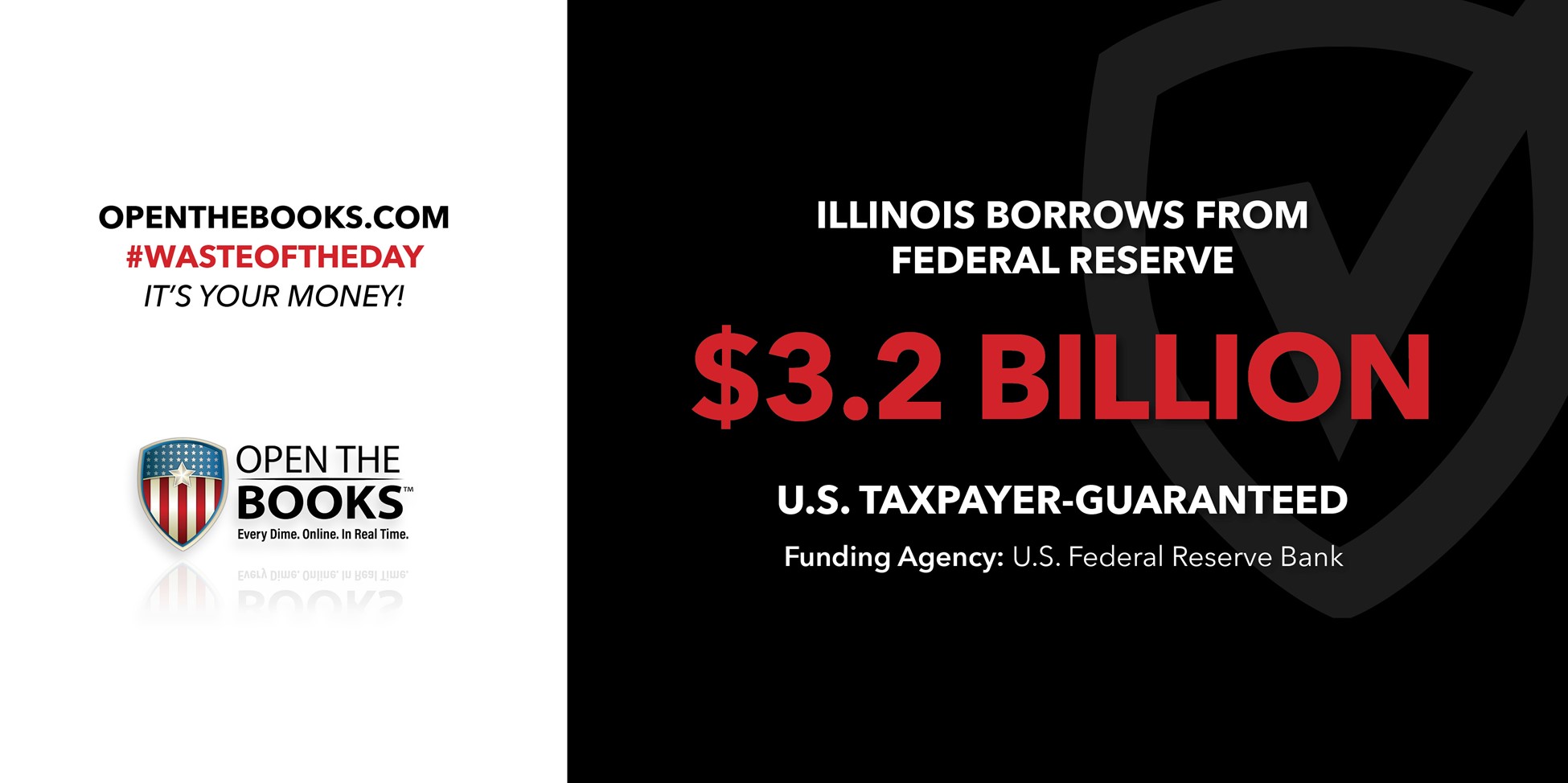Illinois Borrows $3.2 Billion From the Federal Reserve
With its struggling finances, what better way for Illinois to get out of the hole than $3.2 billion in bond guarantees from the Federal Reserve?
The state borrowed $1.2 billion in summer 2020 and then another $2 billion in the fall from the central bank’s emergency lending program for state and local government issuers, Municipal Liquidity Facility.

It was the first state to take advantage of the new program to help pay for some of the expenses from the economic shutdown and postponed income tax collections.
With its almost-junk bond status, Illinois was “unable to secure adequate credit accommodations from other banking institutions” and so qualified for the financing from the lender of last resort.
Its already deep financial woes were exacerbated by the economic devastation of Covid-19 and there are fears that it could go into junk status.
Illinois is rated one notch above junk because of its enormous unfunded pension liability and chronic budget deficit.
With Illinois’ estimated $317 billion pension liability, a family of four now owes $98,000 in unfunded pension liabilities, which is more than they earn in household income, which averages $63,585.
“Short-term borrowing is a short-term band-aid to address the urgency of a short-term problem like one caused by a pandemic,” Governor J.B. Pritzker said during a virtual press conference in November 2020 when discussing the second borrowing.
But Illinois’ financial problems are far from short term.
This desperate move by the state is a revelation: Illinois needs massive financial reform.
The #WasteOfTheDay is presented by the forensic auditors at OpenTheBooks.com.





